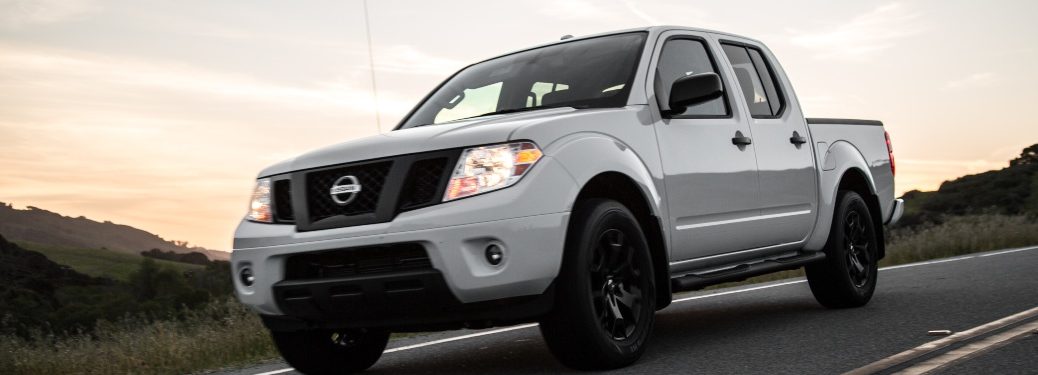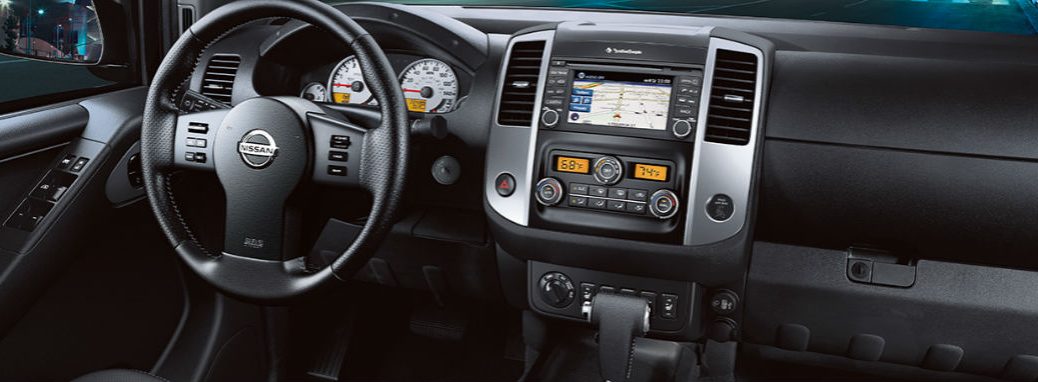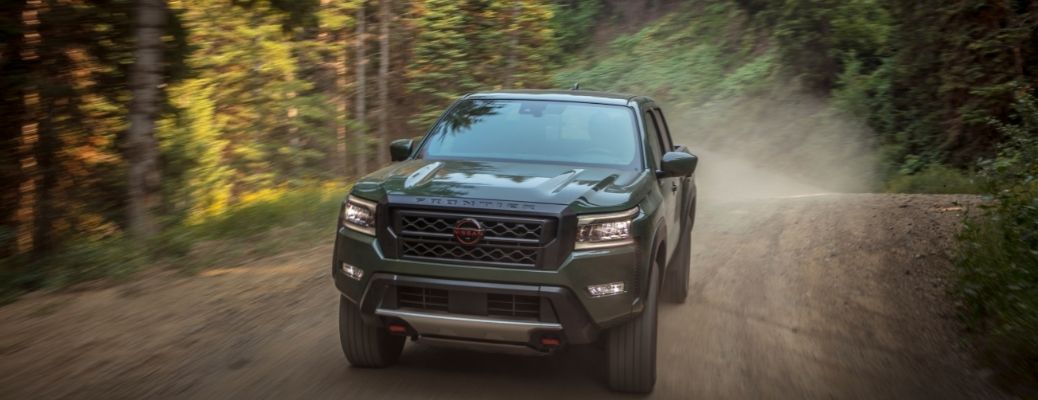Stuck in a crunch when it comes to maintaining your Nissan Frontier brakes? You don’t have to worry anymore, as this article provides all the information you need to make sure your car’s brakes are in top condition.
From the different types of brakes and their features, to useful tips for replacing them, this guide covers it all – ensuring you get optimal performance out of your vehicle!
The Nissan Frontier is a popular mid-size truck and considered one of the best pickups in its class. It has been trusted by many owners for more than two decades and offers ruggedness, reliability, and comfort.
The Nissan Frontier’s brakes are essential components that are designed to slow the vehicle down or stop when needed. Knowing the types of brakes available, features of each type, and tips for replacing your brakes can help ensure you get the most performance from your Frontier’s braking system.

Features of Nissan Frontier Brakes
Nissan Frontier brakes come in a variety of types, each offering unique performance benefits. Depending on the trim level and model year of your vehicle, you may encounter one or more of the following brake systems:
Vented Disc Brakes: The most popular brake configuration for the Nissan Frontier, vented disc brakes are designed to provide powerful stopping power. They feature iron rotors attached to the wheel with two brake pads that grab onto the rotor and dissipate heat generated by friction.
Drum Brakes: Drum brakes use a hollow drum that is connected to the wheel hub assembly. Paired with two brake shoes, they rely on friction between the shoes and drum to stop your Frontier.
Drum-in-Disc brakes: This system uses a combination of vented discs in front and drum brakes in back. The combination provides improved braking capabilities for your vehicle and is typically used in higher trim levels or certain model years of Nissan Frontiers.
Anti-lock Braking System (ABS): ABS prevents your wheels from locking during emergency braking by using sensors to detect individual wheel speeds and modulating the pressure on each wheel’s brakes as needed. Most Nissan Frontiers come equipped with an ABS system which can save you from potential skidding or sliding when braking hard.
Active Brake Limited Slip (ABLS): ABLS is a differential-locking technology that prevents your rear wheels from spinning independently during power takeoffs, helping you maintain traction even when one wheel slips due to low grip surfaces or hard turns while accelerating. This feature increases stability while driving and will only be found in higher trim levels of most Nissan Frontiers models.
Brake pads
Brake pads are an essential part of a vehicle’s braking system. They provide grip between the brake rotors and the caliper, allowing the rotors to slow down or stop the vehicle. Nissan Frontier brakes have three different types of brake pads: organic, semi-metallic, and ceramic. Each type has its own unique features and it is important to choose the right one for your vehicle for optimal performance.
Organic brake pads are made from organic material such as fiberglass, rubber, and resin. They have a softer surface which can provide better braking performance than harder surfaces, but their softer surface also wears down faster than other types of brake pads. Organic pads also create less noise during braking and are better suited for wet conditions since they offer good grip when wet but tend to be less durable in dry conditions.
Semi-metallic brake pads can provide improved stopping power while still being relatively quiet when braking compared to metallic pads. They use a combination of metal materials such as steel wool, copper particles or other metals embedded into a semi-metallic compound which increases longevity while not compromising on performance.
Ceramic brakes are known for their superior quality and durability since they offer great braking performance even after multiple uses in wet or dry conditions. However, they can be quite expensive due to their complexity in production compared to other types of brake pad material that requires fewer resources during manufacturing process. Additionally ceramic brakes tend to wear very slowly due to their strong force yet smooth finish but can also generate more noise than other types of materials when used in prolonged vigorous driving such as racing or off-roading.
Brake rotors
Brake rotors are an essential component of traditional brake systems. These round, circular disks are attached to the axle and reside between the brake pads. The spinning rotors serve as a friction surface that, when pressed firmly by the brake pads, slows down or even stops the truck’s wheels.
Though there is certainly variation among brake rotors depending on the make and model vehicle, most versions come standard with twisted contours on their surfaces. Others might allow replacement slotted or drilled holes to be added. This allows for improved cooling performance or improved water evacuation across freshly rain-soaked pavement.
When it comes time to replace your Nissan Frontier’s brake rotors, there are several key things to consider before making a purchase. Look for parts made from stiff materials such as ceramics to stand up well during extended use over time and also under complex heat loads created by aggressive braking at high speed. Additionally, it’s important to familiarize yourself with various braking surface chill qualities that can help best match your truck’s stopping actions and grip during wet weather conditions like rain or snow during winter months.
Signs of Worn Out Nissan Frontier Brakes

Once you are aware of the different types of brakes used in a Nissan Frontier, it is important to know the signs of worn out brakes. If you catch these issues early on before they become major problems, you can save yourself some time and money.
Here are some common signs that your Nissan Frontier’s brake pads need to be replaced:
- Squealing or grinding noises when applying brakes. This occurs most often when slowing down from higher speeds because the metal backing plate will be rubbing against the brake rotor itself.
- A vibrating or pulsing sensation when stepping on the brake pedal. This is usually caused by unevenly worn brake pads which create an uneven contact patch between the brake pad and rotor surfaces.
- Reduced stopping power which increases stopping distances. This happens when your brakes have little to no friction material left due to wear and tear over time, making them inefficient at slowing down or stopping your vehicle completely.
- Brake warning light being displayed on dashboard: Many newer cars will have an indicator light that will come on if there is a problem with your braking system that needs immediate attention such as low levels of brake fluid or worn out components such as pads and rotors.
All of these issues should be addressed promptly as they all point towards deterioration in your brakes and could cause further issues if action is not taken quickly enough.
Squeaking or grinding noise
Brakes that make a grinding noise usually require brake pads replacement. The pads may have worn too thin, and the metal of the caliper is grinding against the rotors. If this happens, the rotors will need to be replaced as well. Grinding noises are a sign that it is time for brake pads and possibly rotors to be replaced. It is important to do this as soon as possible because if you wait too long, damage could occur to other parts of the braking system.
Brake squeaks can indicate that brake pads need replacing or resurfacing, but it can also mean that something else may be wrong with your brakes – especially if the sound is loud and continuous. Older brakes often make a squealing sound when first applied; however, this sound should quickly dissipate once driving begins and should stop altogether once the car has been in motion for a few moments. Squeaks that persist could signal an issue with corroded backing plates or worn guide pins which both require professional inspection and repair or replacement.
Soft or spongy brake pedal
Brakes are designed to increase the friction between the wheels and the road surface. When brake pressure is applied, hydraulic pressure causes the brake pad and caliper to squeeze the disc or drum, resulting in friction. The frictional force slows down and eventually stops movement.
One indicator of a malfunctioning brake system is a soft or spongy brake pedal. A soft or spongy pedal usually means that there’s an excessive amount of air in the hydraulic lines that flows between the master cylinder and wheel cylinders when pedal pressure is applied. This can be caused by faulty rear wheel cylinders, leaking master cylinder seals, worn piston rings, or even a poor vacuum connection that’s failing to apply booster assistance as it should. If your braking system begins to show signs of this issue, it’s important to make sure that you get it checked out quickly so you can stay safe!
To properly fix this issue you will need to inspect all components of your braking system, flush the existing fluid out with new fluid and bleed any air bubbles out if necessary. Finally replace any worn-out parts as needed for optimal brakings performance.
Replacement Tips for Nissan Frontier Brakes
When it comes time to replace the brakes on your Nissan Frontier, there are a few tips that you should keep in mind. These helpful tips and pointers will help ensure that your brakes are performing their best for years to come.
First off, make sure that you select the right Nissan Frontier brake pad for your vehicle. This is especially important as many popular brands do not necessarily offer brake pads specifically designed for all models of the Frontier. It’s also a good idea to have any worn parts replaced and inspected at the same time if possible. Brakes require regular maintenance in order to remain effective and efficient.
Have a professional mechanic inspect all components of the braking system before installation such as rotors, calipers, hoses, and brake fluid levels. This will help ensure that everything is installed appropriately and all parts are working correctly before replacement; otherwise, you could be looking at a costlier repair bill down the line.
Also be sure to use only clean parts when replacing your Nissan Frontier brakes as any foreign material can result in an uneven response or reduced stopping ability. Finally, never try to rush through a brake replacement job! Take your time and do it properly so that you can enjoy safe braking performance for many miles ahead!
Tools and equipment needed

When changing the brakes of your Nissan Frontier, it is important to have the right tools and equipment at hand. This includes a socket set, pliers, Allen or hex key set, lug wrench, wire cutters/strippers, blow torch (for welding), impact driver/rachet set with extensions, hammer and punches.
Additionally a good set of quality brake pads will be greatly beneficial in properly positioning new pad sets. You may want to consider purchasing some specialty tools as well that can help simplify the job and allow you to get better results. These include caliper wind-back toolset for retracting pistons and measuring device for setting toe-in on the rear brakes.
Lastly make sure that you have a torque wrench in order to properly torque suspension hardware when reinstalling components and wheels. Having all these tools present will make the brake replacement easier for you.
Steps for replacing brake pads
Replacing your Nissan Frontier brake pads is a relatively simple DIY (do-it-yourself) project that offers you the chance to save money on a necessary maintenance job. The process involves several steps, and the following provides more information about each of those.
Before beginning, make sure you have all of the materials needed for replacement:
-Brake pads – either factory Nissan parts or aftermarket performance pieces -Brake cleaner – for cleaning calipers and rotors as part of installation -Screwdriver – used to remove caliper bolts from rim -Caliper tool (optional)– used to compress pistons and cans bearing back into place
You’ll also need a friend with you for safety reasons. Drivers should always ensure their car is parked on level ground with parking brakes applied before beginning any brake repair work. Having another person around in case something goes wrong or help carries heavy tools is also recommended.
- With the parking brake applied and engine off, use the screwdriver to loosen the caliper bolts then remove them from their respective rims
- By hand, slowly begin compressing caliper pistons into their cylinder using either a long screwdriver or a specialized caliper tool to aid in this process
- Apply brake cleaner liberally onto rotor disc surface prior cleaning it with old rag or towel. Make sure all slime and trapped contaminants have been removed radius before removing old brake pad set from bracket 686326 which will be located on top rim side of assembly driver’s side front rotor facing towards passenger side *caution note* Dispose all worn down particles properly according to your city/state regulations waste management guidelines.
Reinstalling new replacement set:
- Place new pads onto designated left side slot grooves inside bracket locator making sure part clips into position safely *Double check footage readings on core diameter make sure it meets vendor’s measurements listed product specs sheet before continuing
- Use caliper tool pushing further piston with slight force until pad reaches contact surface fully flush against inner drum circle face cutout notching
- Positioning back spare bolts making sure they meet predrilled holes exactly bolting tight only use medium amount torque tighten setting calibrating pad’s set properly
- Take vehicle out test drive verify if braking system works accordingly adjusting any discrepancies if necessary.
Steps for replacing brake rotors
Once you have determined the correct vehicle year, model, and trim for your replacement brake rotors, the actual installation of them is a straightforward process. The most important thing is to observe caution at each step. To replace brake rotors on the Nissan Frontier, follow these steps:
- Park your Frontier on a solid surface in a safe location and engage your parking brake. Use wheel chocks to secure the wheels on either side of the one you will be working on.
- Using an appropriate wrench or socket head and a scissor jack, raise the Frontier up until it is level with the axle and make sure it is securely supported with jack stands before continuing work.
- Take off all lug nuts that hold the tire in place, then remove the tire from its axle mount and set aside out of your way – some vehicles are equipped with sensors that need to be removed first (check to make sure).
- Unscrew caliper mounting bolts from front side (due to normal wear-and-tear initial braking system removal is sometimes needed but should not be necessary). Then pull caliper off its mount by hand, taking care not pull off brake line connected or other parts found along suspension system. Inspect pads for wear if pads are reusable type then just reposition calipers back onto rotor by reversing mounting bolt installation process else can skip this step as both new pad types & rotors should come pre-assembled together as kit form.
- Unscrew center hub cap screw then using appropriate tool remove center cap assembly as well as bolts holding mounted rotor onto drive axel; remove entire assembly by gently pulling off axel hub while taking note of any spacers & washers which were used in original assembly process. If part number indicated match up use same pieces during reassembly but if any discrepancies exist consult repair manual before installation in order prevent improper fitment problems further down line.
- Install new rotor onto drive axel matching up any spacers/washers used previously at same tier locations around circumference hub; using torque wrench tighten assemblies correctly according specified torque levels outlined read owners manual once more after ensuring proper connections double checked screws/bolts reinstall any remaining components related autobraking system put newly replaced tire back on axle switching over lug nuts one time process complete enjoy ride comfort knowing added security higher quality new part provide enhanced safety!
Steps for replacing brake calipers

If it has been determined that a brake caliper needs to be replaced, the following steps should be taken:
Step 1: To complete this process you will need jack stands, an adjustable wrench, a ratchet and socket set, brake calipers and possibly new brake pads depending on their condition. Make sure all of these tools are available before starting the repair.
Step 2: Before working underneath the vehicle, make sure to engage the parking brake and block the tires for safety.
Step 3: Using a jack stand, raise up your Nissan Frontier until you can work comfortably underneath it and support it with the jack stand so that it remains in place.
Step 4: Remove all nuts, bolts and other components from around the brake caliper and use adjustable wrenches if necessary to loosen them from the vehicle. The bolts may be stuck together so take caution when removing them. Work slowly as to not damage any of the surrounding parts of your car.
Step 5: With all of the components removed from around the caliper, gently remove it from its bracket and place it aside on a flat surface where nothing will spill onto it or become lodged in any crevices while performing repairs. In some instances, you may need to use additional tools such as seal pullers or pliers for removal.
Step 6: Inspect all other pieces accordingly for wear such as brake lines if possible and replace any necessary items during this step as needed with factory-authorized parts only. Reassemble all components once inspection has been completed for each part – being sure to torque fasteners securely – before moving onto Phase two of replacing a caliper on your Nissan Frontier.
Conclusion
When shopping for brakes for your Nissan Frontier, it is important to understand the different options that are available. Ceramic brake pads are quieter and will last longer but will cost more up front. Semi-metallic brakes are typically cheaper and have a shorter lifespan, but they perform well in most situations.
In either case, make sure you have an experienced mechanic inspect and replace your brakes to ensure they fit properly and function as expected. With the right knowledge of your vehicle’s requirements, you should be able to drive confidently with the knowledge that your Frontier is equipped with a dependable braking system.
FAQ’s
Which type of brakes are best?
It depends on the specific needs and preferences of the driver.
How long do brakes last on Nissan Frontier?
The lifespan of brakes on a Nissan Frontier can vary depending on driving habits and conditions, but they typically last between 30,000 and 70,000 miles.
How do I know which brakes need to be replaced?
Signs that brakes may need to be replaced include squeaking or grinding noises, reduced braking power, and vibrations or pulsations when braking.
Are all Nissan brake pads the same?
No, there are different types of brake pads available for Nissan vehicles depending on the model and driving needs.
When should I replace my Nissan brakes?
Brakes should be replaced when they are worn down to a certain thickness or when signs of wear and tear are present.
How much does it cost to replace brakes on a Nissan Frontier?
The cost of replacing brakes on a Nissan Frontier can vary depending on the type of brake pads and other factors, but it typically ranges from $150 to $500.
What company makes Nissan brake pads?
Nissan brake pads are made by various manufacturers, including Nissin, Akebono, and Bosch.
How many types of brake pads are there?
There are several types of brake pads available, including ceramic, metallic, and organic.
How much do brakes cost for Nissan?
The cost of brakes for a Nissan can vary depending on the model and type of brake pads, but it typically ranges from $50 to $200 per set.
Which brakes are more important to replace?
All brakes are important to replace when they are worn down or damaged, but the front brakes typically wear down faster and may need to be replaced more frequently.
See Also:
Best nerf bars for nissan frontier 2023
Best mud flaps for nissan frontier 2023
Best leveling kit for nissan frontier 2023
Best tonneau covers for nissan frontier 2023
Best tires for nissan frontier 2023

